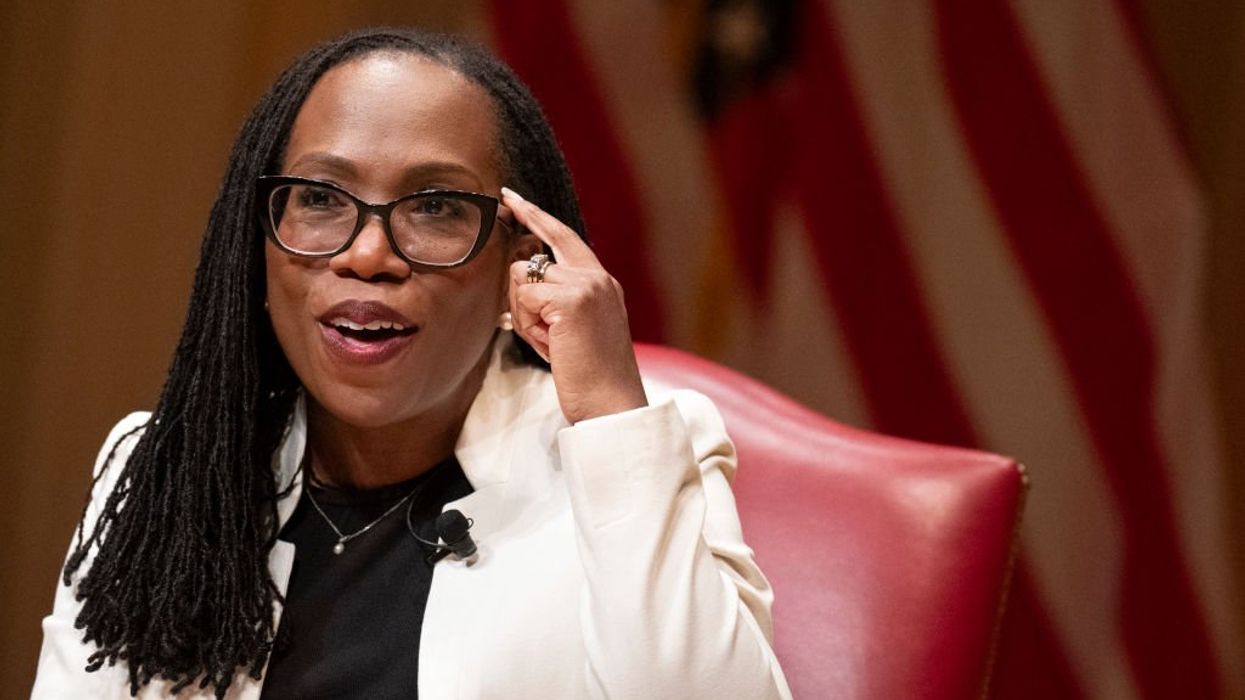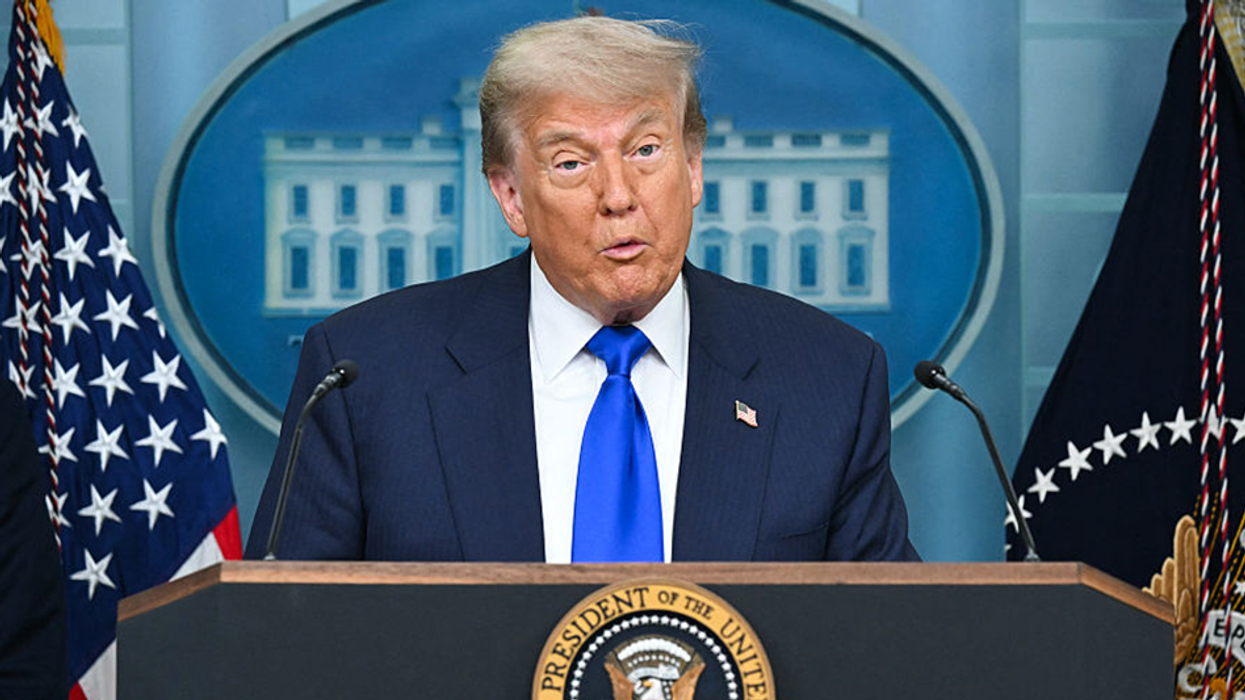© 2025 Blaze Media LLC. All rights reserved.
Obama Afghan Speech: U.S. Troop Withdrawals, Shift From Combat to Support Mission
June 22, 2011
You can read the full transcript of President Obama's Afghanistan speech here.
WASHINGTON (The Blaze/AP) -- President Barack Obama says 10,000 troops will come home from Afghanistan by the end of this year as the U.S. mission shifts from combat to support after nearly 10 years of war.
The president said a total of 33,000 troops would be withdrawn by next summer, as he announced what he called "the beginning but not the end of our effort to wind down this war."
Obama spoke from the White House East Room on Wednesday night to mark a milestone in a war he inherited and expanded with a surge of troops earlier in his administration. He says conditions are right now to start drawing it to a close. Watch the entire speech below, or continue reading:
Visit msnbc.com for breaking news, world news, and news about the economy
After the 33,000 troops are gone, about 70,000 will remain until the transition is complete in 2014.
THIS IS A BREAKING NEWS UPDATE. Check back soon for further information. AP's earlier story is below.
Pulling home more than 30,000 Americans he sent to war, President Barack Obama planned to announce Wednesday night that the "surge" forces he ordered into Afghanistan would be out by next summer, hastening the end of a conflict that has been more costly and deadly than ever imagined.
In an address to the nation, Obama was to say he is withdrawing 10,000 troops by the end of this year, and more than 20,000 in addition no later than September 2012, according to administration officials. That accounts for all of the extra forces he ordered to Afghanistan in December 2009 to turn around a flailing war effort and help embattled Afghan forces prepare to lead their own country.
But that means almost 70,000 U.S. troops will remain in an unstable country, fighting in a war bound to see more Americans killed.
The announced drawdown, at a time when the public has turned decidedly against the war, will be complete just months before the president goes before voters in his bid for a second term. It remains unclear when Obama will bring home remaining forces, but the U.S. and NATO combat mission is not expected to end until December 2014 - and even then, a sizable and enduring U.S. contingent may remain in a different role.
Obama's latest move is buttressed by the bold bottom line claimed by his security team: Afghanistan, training ground for the Sept. 11, 2001, attacks on America, is no longer a launching pad for exporting terrorism and hasn't been for years. Yet the White House insists that it must maintain a strong fighting force in Afghanistan to keep the country from slipping back into a haven for al-Qaida terrorists.
Obama is under mounting political pressure to wind down the war, especially since Osama bin Laden, the man considered to be the face of it, is dead. U.S. forces found and killed the al-Qaida leader in Pakistan in May, a significant blow to an organization that nevertheless still threatens the United States.
At least 1,500 members of the U.S. military have died and 12,000 have been wounded since the U.S. invasion of Afghanistan in late 2001. The financial cost of the war has passed $440 billion and is on the rise given the heavy troop commitment, jumping to $120 billion a year, twice the total of two years ago. Those costs have risen in importance as a divided U.S. government struggles to cut its budget deficits.
The decision to start withdrawing forces in July amounts to a pledge kept by Obama. Yet the scope and pace of the drawdown have been hotly debated. The military lobbied for a more modest troop reduction and Obama promised a significant one as support for the war by the country and Congress faded.
The initial withdrawal is expected to happen in two phases, with 5,000 troops coming home this summer and an additional 5,000 by the end of the year, a senior U.S. defense official said.
In total, Obama will announce the withdrawal of 33,000 troops. That's the 30,000 he announced he was sending in an address in December 2009, plus an extra 3,000 he authorized Defense Secretary Robert Gates to employ to support the effort.
Still, the force will remain expanded on Obama's watch. He approved 21,000 additional U.S. troops for Afghanistan shortly after taking office, bringing the total number there to 68,000. That's the force level the U.S. will return to after the surge troops are brought home.
For Obama, the goal is to explain a stay-the-course moment of progress to the American people - the U.S. is not yet leaving Afghanistan - without the trappings of a major war address. He was speaking from the all-purpose East Room, not the Oval Office, and he was expected to speak for about 10 to 15 minutes, half the time he spent when he announced the troop surge almost 19 months ago.
Obama is arguing that the reinforcements he sent have accomplished their mission: eroding the capacity of Taliban insurgents and providing time and training for Afghanistan's forces to take charge.
The United States remains in Afghanistan primarily to keep it from becoming a haven for al-Qaida, the terrorist network that based training operations there before launching the worst attacks on American soil on Sept. 11, 2001. Obama's ultimate goal is to defeat al-Qaida.
Most Americans oppose the war in Afghanistan and are far more concerned about the teetering economic recovery at home. A new AP-GfK poll out Wednesday found that Obama's approval rating on handling Afghanistan dipped to 52 percent, falling 13 points from its high of 65 percent in May just after the death of bin Laden.
Senior administration officials said Obama was fully aware as he made his decision that the public has grown weary of war after nearly a decade of fighting in Afghanistan. He also took into account the country's other national security priorities, the burden U.S. troops have born during the conflicts in Afghanistan and Iraq, as well as the cost to American taxpayers.
Obama has also been facing increased pressure on Capitol Hill, even from conservative members of his own party and some Republicans, to significantly cut U.S. forces and shift the mission in Afghanistan.
"The country does not hold that level of strategic value for us, especially at a time when our nation is confronting a debt crisis and our armed forces are being strained by repeated combat deployments," Sen. Richard Lugar, the top Republican on the Senate Foreign Relations Committee, said Wednesday
Military commanders favored a plan that would allow them to keep as many of the 30,000 surge troops in Afghanistan for as long as possible, ideally through the end of 2012. That timeline would have given them greater troop strength through two crucial fighting seasons.
The Afghan fighting season ramps up in late spring and can last into the fall.
The president reached his withdrawal decision a week after receiving a range of options from Gen. David Petraeus, the top U.S. and NATO commander in Afghanistan. Obama's timeline was within the range of options Petraeus presented, but clearly the president wanted a faster withdrawal than some of the choices presented him.
In Afghanistan on Wednesday, the nation's Defense Ministry said the NATO-trained military was ready to take responsibility for fighting Taliban insurgents and securing key parts of the country.
Many Afghans are eager to see the Americans leave, yet there are big risks for the government there.
"There will be some battles, there will be suicide attacks and bomb attacks," acknowledged Defense Ministry spokesman Gen. Mohammad Zahir Azimi. "But we in the Afghan forces are prepared to replace the foreign forces, and I'm confident the army has enough capacity and ability."
Administration officials say the U.S. drawdown will continue after September 2012, though there are no specific plans yet for how and when. Some of those decisions could be made next spring, when world leaders will gather in Chicago for back-to-back NATO and G-8 summits.
U.S officials have been saying for several years that al-Qaida's safe havens had shifted from Afghanistan to Pakistan. While there has been some success in degrading the terror network in Pakistan, most notably with the killing last month of bin Laden, there are still deep concerns among U.S. officials about Pakistan's commitment to fighting terrorism.
A reduction this year totaling 10,000 U.S. troops would be the rough equivalent of two brigades, which are the main building blocks of an Army division.
In the hours leading up to his speech to the nation Wednesday, Obama briefed congressional leaders and U.S. partners overseas about his withdrawal plans. He spoke to Afghan President Hamid Karzai and Pakistani President Asif Ali Zardari, as well as leaders from key NATO countries: British Prime Minister David Cameron, French President Nicolas Sarkozy and German Chancellor Angela Merkel. Obama also called NATO Secretary General Anders Fogh Rasmussen.
Obama will visit troops Thursday at Fort Drum, the upstate New York Army post that is home to the 10th Mountain Division, one of the most frequently deployed divisions to Afghanistan.
Want to leave a tip?
We answer to you. Help keep our content free of advertisers and big tech censorship by leaving a tip today.
Want to join the conversation?
Already a subscriber?
more stories
Sign up for the Blaze newsletter
By signing up, you agree to our Privacy Policy and Terms of Use, and agree to receive content that may sometimes include advertisements. You may opt out at any time.
Related Content
© 2025 Blaze Media LLC. All rights reserved.
Get the stories that matter most delivered directly to your inbox.
By signing up, you agree to our Privacy Policy and Terms of Use, and agree to receive content that may sometimes include advertisements. You may opt out at any time.





